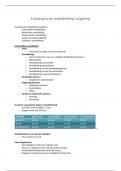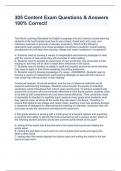Resume
Summary Brock Biology of Microorganisms (15th edition)
- Cours
- Établissement
- Book
Summary from the book 'Brock Biology of Microorganisms (15th edition)'. Chapter 1: P1-6 & P9-14 Chapter 2: P1-13 Chapter 3: P1-15 Chapter 5: P1-17 Chapter 12: P1-4, P6 & P9-11 Chapter 13: P1-10 Chapter 14: P1-14, P17, P19, P20 & P23 Chapter 20: P14 Chapter 23: P3, P9, P12 & P13 Chapter 24: P1-11 C...
[Montrer plus]













